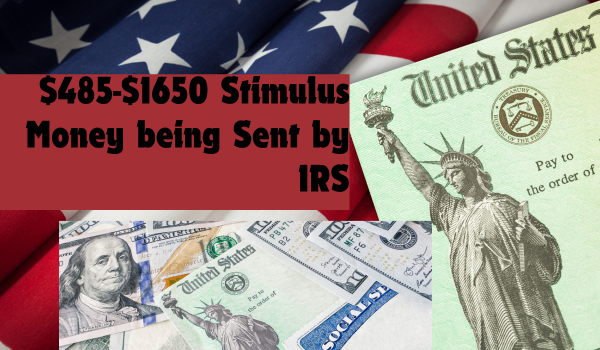As inflation pressures linger, the IRS has started rolling out targeted stimulus relief to certain taxpayers. The $485-$1650 Stimulus Money is being Sent by the IRS—but only if specific conditions are met.
$485–$1650 Stimulus Money Being Sent by IRS
The Internal Revenue Service (IRS) has begun issuing a new round of targeted stimulus payments, but unlike earlier mass disbursements, this time it’s strictly conditional. The payment, ranging from $485 to $1,650, is being sent to eligible Americans who meet a very specific set of criteria related to income, dependents, and filing history. If you’ve recently filed your taxes or receive certain credits, this money could already be on its way.
Who Is Eligible for the $485-$1650 Stimulus Money?
This latest stimulus effort is part of a federal tax relief measure tied to refundable tax credits. The IRS has identified several qualifying groups based on 2024 tax filings.

You may qualify if you meet any of the following:
- Claimed the Earned Income Tax Credit (EITC) or Additional Child Tax Credit (ACTC)
- Filed a 2024 return with income under $65,000 (single) or $130,000 (joint)
- Have at least one dependent under the age of 17
- Paid out-of-pocket for childcare or caregiving costs
- Experienced sudden unemployment or income drop in 2024
Those who did not file taxes for 2024 or who owe significant back taxes may be excluded unless they are enrolled in IRS non-filer programs.
Payment Amounts Based on Filing Situation
The IRS has tiered this payment based on income, filing status, and number of dependents. Here’s a breakdown of the possible amounts:
| Filing Status | Dependents | Estimated Payment |
|---|---|---|
| Single, Low Income | 0 | $485 |
| Single, With 1+ Child | 1–2 | $850 – $1,100 |
| Married Filing Jointly | 1–3 | $1,200 – $1,650 |
These payments are non-taxable and will not affect other federal benefits like SNAP or Medicaid.
How Will the $485-$1650 Stimulus Money Be Sent?
All payments are being made via direct deposit or mailed check, based on the method used on your most recent tax return. There is no need to apply separately—eligibility is automatically determined by the IRS.
Timeline and delivery process:
- Direct deposits: Already started as of June 15, 2025
- Mailed checks: Rolling out between June 24 – July 10, 2025
- Labeled as “IRS Relief Credit 2025” in bank statements or letters
Recipients can track their payment using the IRS’s “Where’s My Refund?” tool or IRS2Go mobile app.
What If You Didn’t File Your 2024 Taxes?
If you haven’t yet filed for 2024, there is still time. The IRS has extended late-filing eligibility until October 15, 2025, for individuals who may still qualify for this payment.
Steps to take:
- File your 2024 tax return as soon as possible.
- Ensure that you claim all eligible credits (EITC, ACTC, Childcare Credit).
- Use free tax filing services if your income is below $73,000.
Non-filers who are elderly, disabled, or on SSI can submit simplified returns through the IRS’s designated outreach program.
Why the Payment Amounts Vary
This isn’t a standard stimulus check. It’s tied to your 2024 tax profile, which means:
- More dependents = higher credit
- Filing jointly = larger thresholds
- Lower income = higher payout
The IRS is using this method to ensure relief is better targeted, avoiding the widespread overpayments and backlogs seen during pandemic-era checks.
If you meet the conditions, this IRS stimulus could bring significant relief—act quickly to ensure you don’t miss your chance.